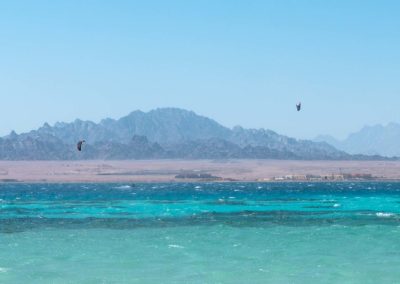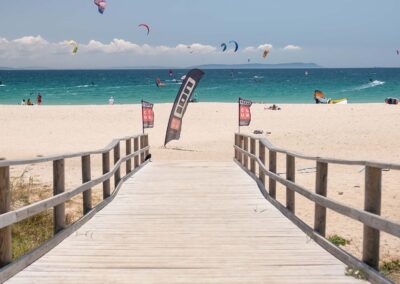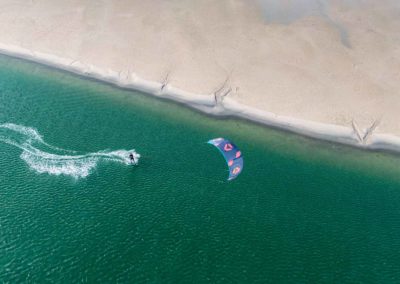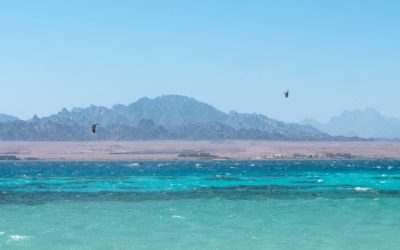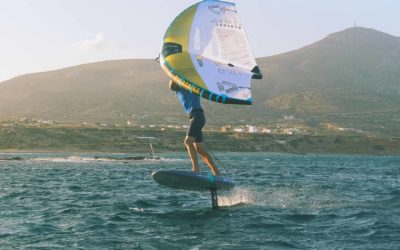MASTER YOUR KITESURF TRANSITIONS: HOW TO IMPROVE YOUR RIDE
Transitions in kitesurfing are essential to make your ride smoother and more stylish. They let you change direction without losing speed and add a technical dimension to your ride. Whether you’re a beginner or an intermediate rider, mastering quick and efficient transitions can make a huge difference in your sessions.
In this article, discover different transition techniques, tips to improve them, and how to add extra style to your maneuvers.
WHY TRANSITIONS MATTER IN KITESURFING
Well-executed transitions allow you to ride fluidly, without stopping to reposition your kite. They also give you the opportunity to show your technical skills and add your own style to your riding.
Here are a few must-know transitions:
- The jibe: the classic strapless transition to switch sides
- The toeside or jump transition: essential twin-tip maneuvers
The tack: more technical, but key for riding upwind strapless
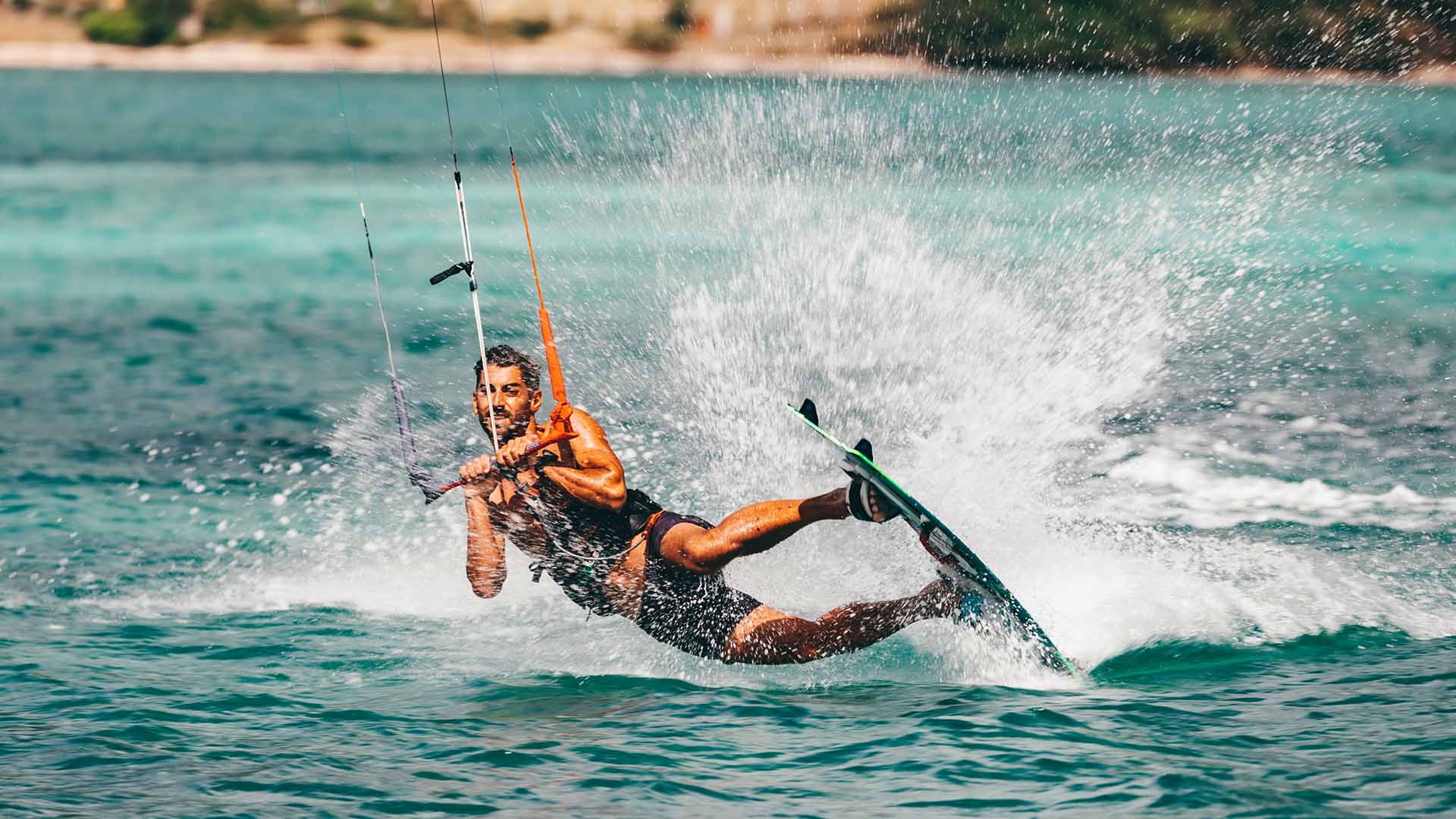
THE BASIC TRANSITIONS TO MASTER: STRAPLESS & TWINTIP
1. The Strapless Jibe: A Smooth Direction Change
The jibe is the go-to strapless surfkite transition to change direction while maintaining control and flow.
How to nail your strapless jibe:
- Set your kite: slightly raise it to reduce traction and ease the turn
- Commit to the curve: initiate a smooth carve by applying pressure on your rails
- Move your feet fluidly: switch stance quickly to avoid losing balance
- Keep your speed: decent speed helps prevent sinking at the end of the move
💡 Pro tip: Always look in the direction you want to go to stay stable and smooth.
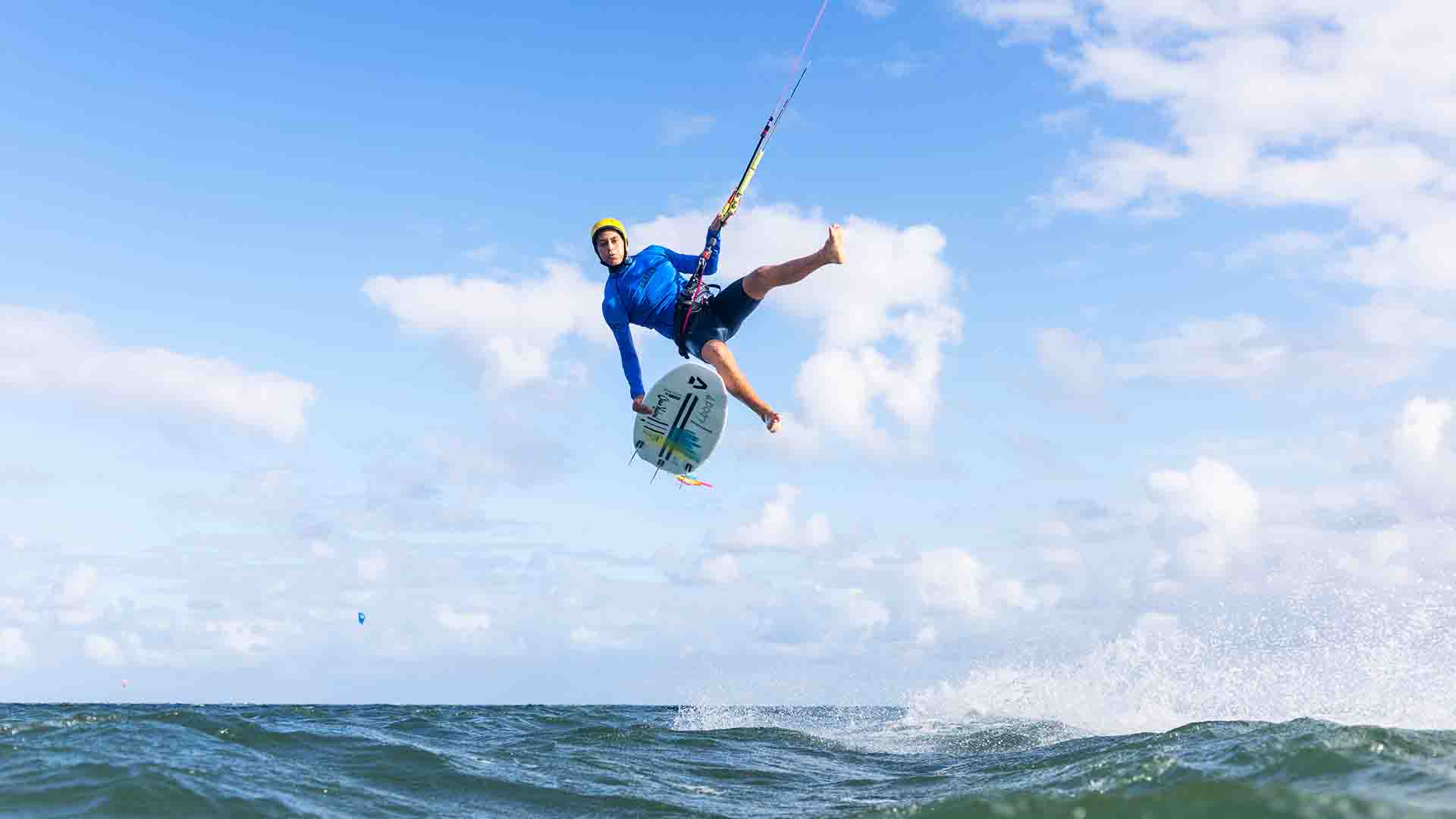
2. The TwinTip Jibe: A Different Approach
In TwinTip kitesurfing, you don’t do a jibe in the classic sense, as the board is symmetrical. Your go-to transitions are either the toeside turn or a jump transition, depending on your level.
How to succeed in TwinTip transitions:
- Slightly slow down by sheeting in to keep balance
- Send your kite to the other side to generate pull and initiate the switch
- Choose your move:
- Toeside turn: stay low, pivot, and keep your board in contact with the water
- Jump transition: release pressure, hop slightly, rotate your body, and land clean
💡 Pro tip: Sync your kite movement with your body to keep solid control and clean style.
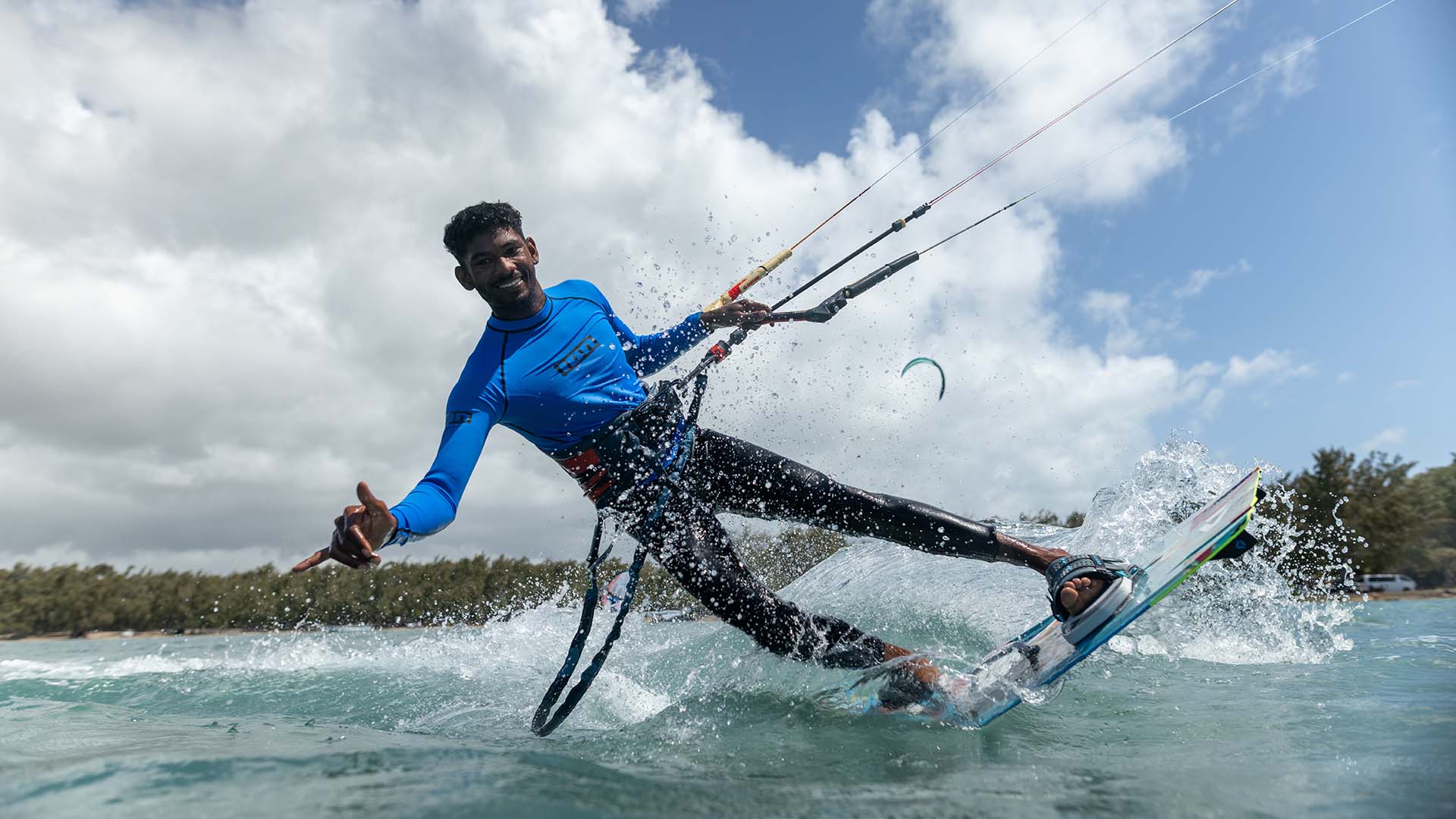
3. The Tack: For Riders Seeking Precision
The tack (upwind transition) is a more technical strapless move. It allows for quick direction changes while gaining upwind. It’s especially useful in freeride or technical spots.
Steps to land a tack:
- Anticipate your kite movement: send it to the opposite side while you switch stance
- Move your feet in one smooth action—don’t rush
- Shift your weight slightly forward to keep momentum
💡 Start practicing the tack on flat water to ease your learning curve.
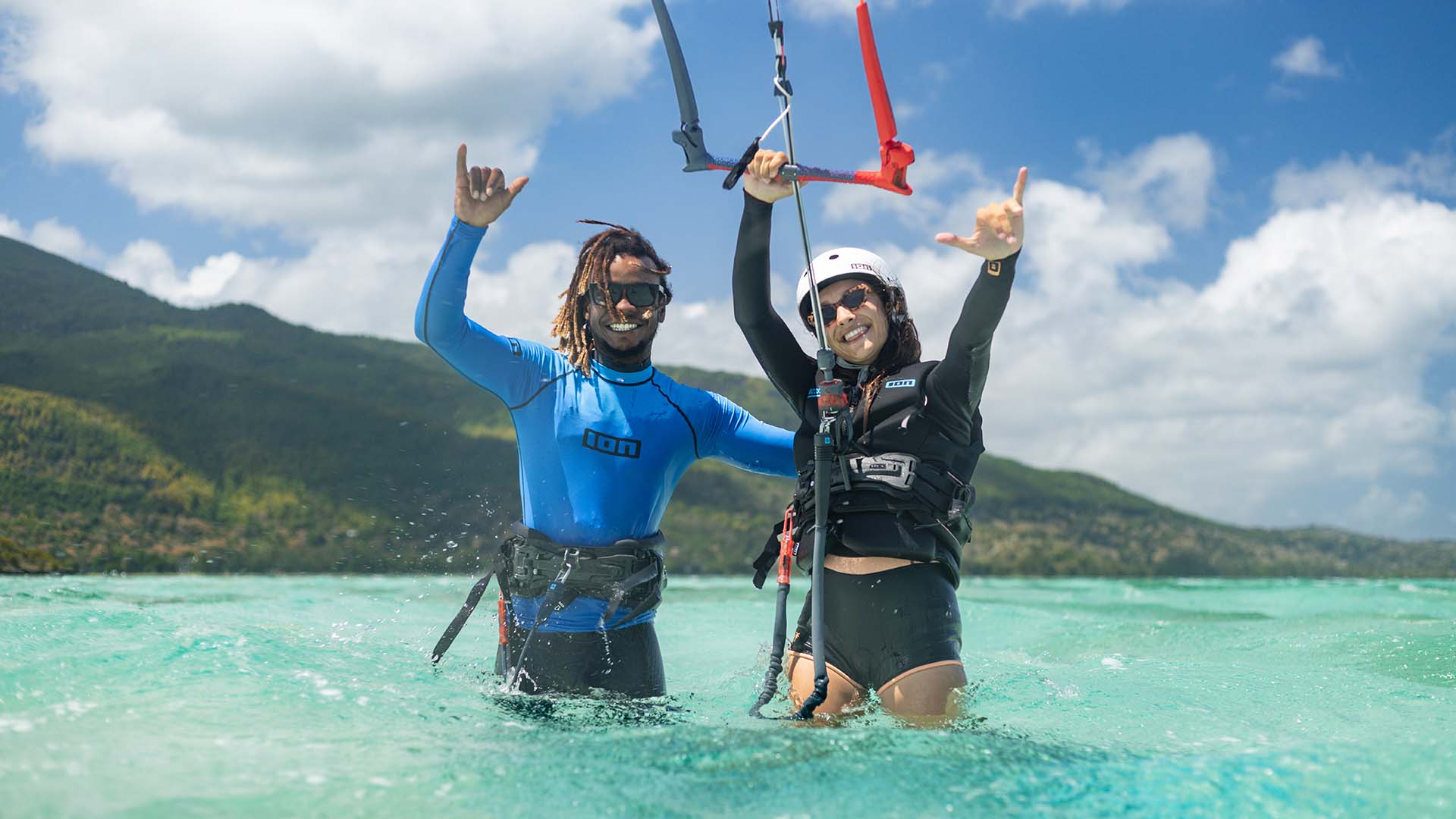
COMMON MISTAKES AND HOW TO FIX THEM
1. Rushing It
Many beginners stand up too quickly or switch direction without anticipation, leading to instability. Take your time, think ahead, and always maintain a minimum speed.
2. Poor Kite Control
If your kite is poorly positioned or flown during the transition, you risk losing traction or even crashing. Work on kite height and power management depending on the move.
3. Ignoring Weight Distribution
A smooth transition relies on transferring your weight correctly between legs. Practice your balance and learn to feel how the board reacts under your feet.
Tips to Improve Your Transitions
1. Practice Often
Transitions require timing and coordination. Practice regularly—even in light wind—to refine your movements.
2. Work on Balance and Posture
Good balance is key to successful transitions.
3. Take Personalized Lessons
A fresh outside perspective can make a big difference. At ION CLUB, our coaches help you identify what to improve and accelerate your progression.
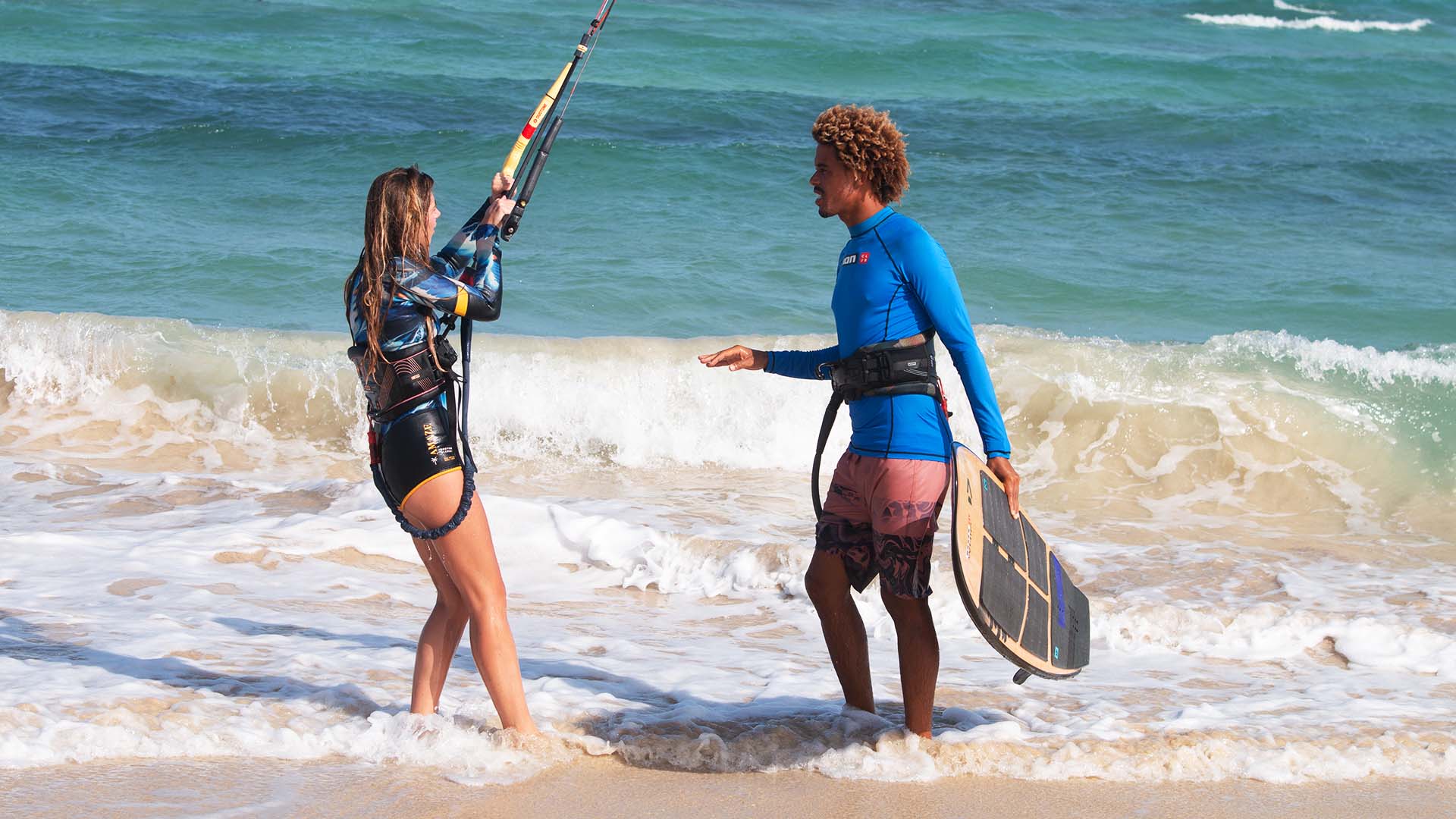
TOP DESTINATIONS TO PRACTICE TRANSITIONS WITH ION CLUB
Some spots are ideal for learning and improving transitions thanks to consistent wind and flat water.
1. Safaga, Égypte
With its steady thermal wind and flat water, Safaga is a perfect playground to work on transitions above a natural aquarium.
2.Le Morne, Mauritius
The lagoon at Le Morne is perfect for learning new moves in shallow, flat, and protected waters. ION CLUB instructors will help you progress quickly.
3. Tarifa, Spain
In Tarifa, the constantly changing wind conditions force you to adapt—a perfect setting to level up your transitions in real-life situations.
Also great: Golf de Roses, Sal, Fuerteventura, and Dakhla White Dune Canyon
Final Tips to Master Transitions
- Be patient and consistent: The key is repetition. Every session is a chance to improve
- Watch experienced riders: Get inspired by their posture and flow to sharpen your own technique.
- Have fun! Transitions are a key part of kitesurfing. Enjoy experimenting and finding your own style.
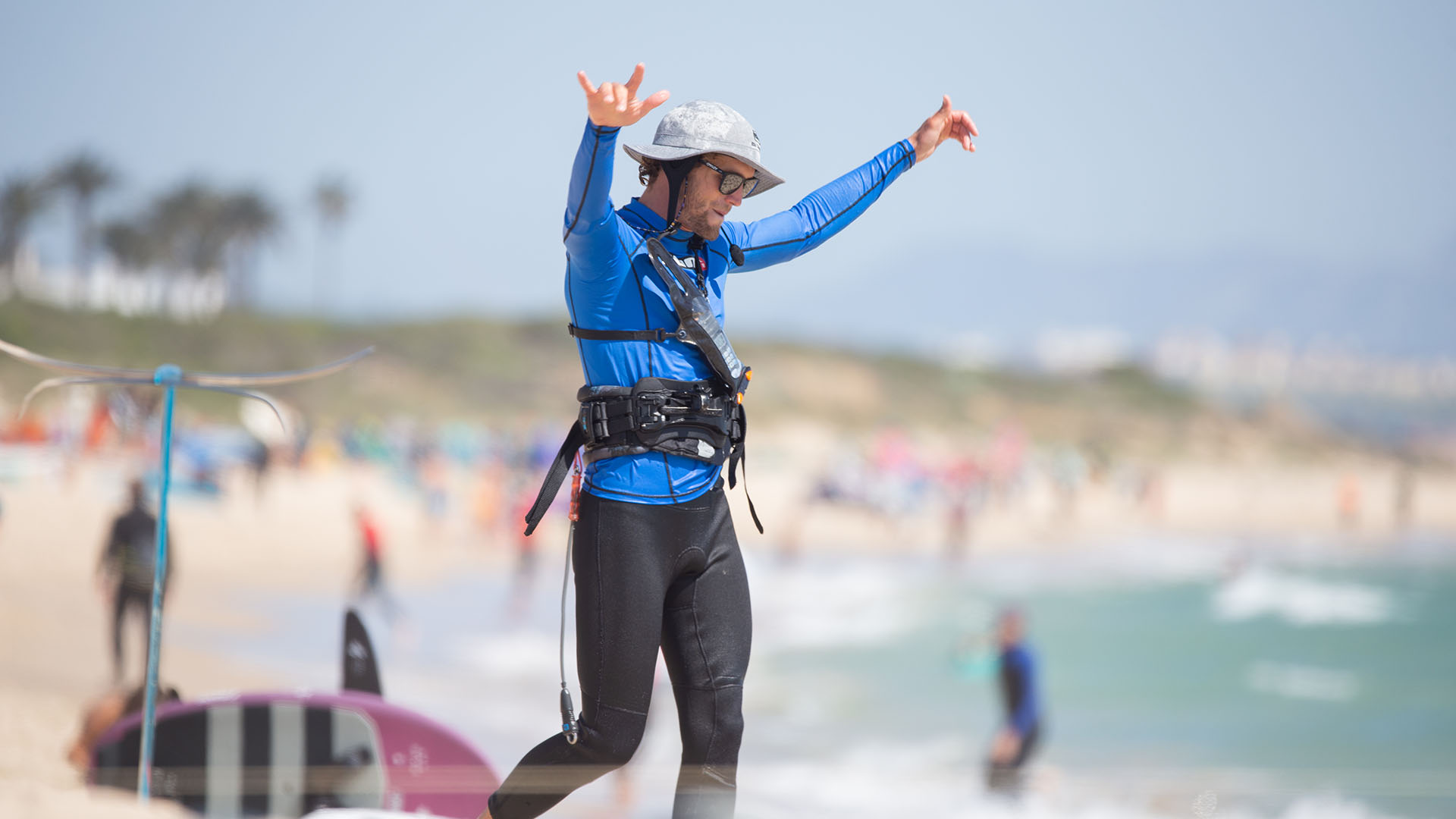
Alice Jouve, communication manager, shares her experience:
“Transitions were one of the easiest things for me to learn. You quickly get the hang of the movement, and with a bit of practice and guidance from the instructor, it all comes together. I personally learned in Dakhla—such a great place to improve. Strapless transitions, though… still a challenge for me! I’ve got some work to do, haha.”
With these techniques and a bit of training, your transitions will become smoother, faster, and more stylish. Personalized coaching at ION CLUB can help you progress faster and push your limits. So… ready to link your transitions like a pro?
ION CLUB CELEBRATES ITS 40th ANNIVERSARY AROUND THE WORLD
40 YEARS OF RIDING, PASSION AND SHARING THE JOURNEY WITH YOUA Worldwide Celebration and a United Community For 40 years, ION CLUB has been shaping its story around a shared passion: watersports. Born from a bold dream: four windsurf boards packed into a Renault 4 by...
SAFAGA – WHAT RIDERS REALLY SAY
SAFAGA – WHAT RIDERS REALLY SAYSafaga is one of Egypt’s rising kite destinations – ideal for those looking for consistent wind, flat water, and a laid-back atmosphere. It’s not overcrowded, yet fully equipped with pro-level gear and instructors. But what do the riders...
WINGFOIL WATERSTART TECHNIQUES: TIPS TO MASTER THIS KEY SKILL
WINGFOIL WATERSTART TECHNIQUES: TIPS TO MASTER THIS KEY SKILLThe waterstart in wingfoiling is the crucial step that marks your transition from beach training to real sessions on the water. While this maneuver might seem intimidating at first, it quickly becomes second...

